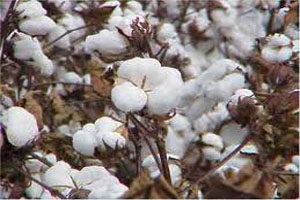
Cotton prices dwindling on change in China policy, higher crop yield globally
YarnsandFibers News Bureau 2014-07-23 00:00:00 – USAOn the outlook that China will start releasing its huge reserves of cotton fiber, and on forecasts of weakening demand for apparel in key markets around the world, there is have been a drop in spot cotton prices since the beginning of July.
The seven-market U.S. average spot price has declined by almost $0.06 in the first two weeks of July, 7 percent below its price at the end of June and $0.17 (20 percent) below the recent high it reached in early May.
China’s reserve policy, which has kept prices above natural market equilibrium levels, has helped farmers but the yarn and garment producers have been badly hit. The worldwide competitiveness of fiber is also hurt. Many retailers and brands switched to synthetics like polyester and rayon when cotton prices went sky-high three years ago, and have gotten their consumers used to and even, in some cases, inclined toward manmade fabrics since then.
However, China, which is the biggest supplier of the world’s apparel, is also the largest user of cotton, and sitting on more than half of the world’s reserves of the fiber. Part of the strategy for releasing the reserves, many in the industry believe, is to get back some of its dominance in the fiber, and to help ease the apparel manufacturing cost increases that are causing China to lose key programs to countries like Vietnam and Bangladesh.
The U.S. Department of Agriculture, meanwhile, is forecasting global year-end stocks to be higher than last year thanks to better-than expected crop yields and weak demand for key categories like denim, underwear, socks and other apparel. This will serve to further slowdown in prices.
Demand for cotton apparel categories might become stimulated by a reduction in cotton prices that are passed along to consumers. Or, better yet, brands can take now-cheaper cotton and use it to produce higher quality yarns, fabrics and garments, which might actually jump-start the market for better cotton products, and perhaps move the market away from synthetics into a new cotton cycle.
A continued drop in cotton prices will no doubt be felt throughout the supply chain, including by synthetic fiber producers.
Market Intelligence
Ask for free sample Report

experience
Customer Base
dedicated team
Countries Served Worldwide









